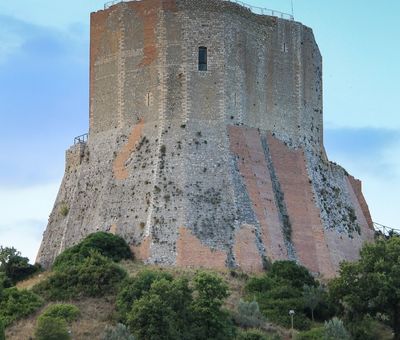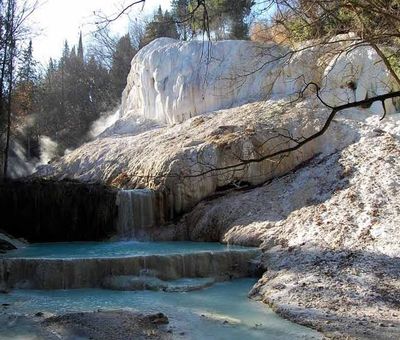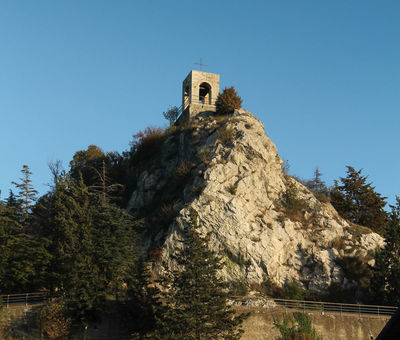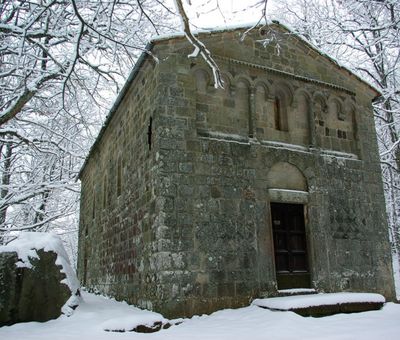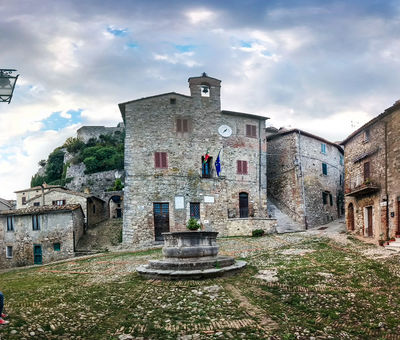Rocca d'Orcia
Rocca d’Orcia is a typical medieval town: stone arches and a large old cistern with Tintinnano Fortress watching over it. It changed hands several times. Legend has it that it never fell through force, but due to traitors who opened the gates at night. In 1207 in the Borgo, for the first time in Europe a charter was issued to define the duties and rights of the people toward their lords:Charta Libertatis. Documents and myth point to the fact that Saint Catherine of Siena stayed here in 1367, receiving the divine gift of writing as an illiterate right here.
Bagni San Filippo
Bagni San Filippo is a well-known spa destination, where you can take a dip in the naturally healing sulphur waters of Fosso Bianco, the stream that flows through the town carving a special chalky conformation down the years called the White Whale. In the nearby woods visit the Grotta di San Filippo Benizi, the Florentine monk, who in 1269 sought refuge in this magical place in the wilds to flee his probable appointment as pope.
Campiglia d'Orcia
Campiglia d’Orcia stands between the valley and Amiata. In the twelfth century it belonged to the Visconti, who made it famous in 1155 upon freeing Arnaldo da Brescia, the Roman heretic who hid in the Briccole, along Via Francigena, to escape at night, hence becoming the prophet of freedom and good government. Higher up, you find Rocca di Campigliola, which rises up amid the fields, an abode to fairies said to cut the wheat on June nights. In the morning farmers would wake up to find their bales already made, filling other harvesters so much with envy that, beneath the sun, they said, “If only they had fields in Campigliola!”
Vivo d'Orcia
Among the natural white firs and the springs, you find Vivo d’Orcia. The two hermitages make their presence felt: San Pietro, in the Cervini area, built on top of the remains of the Camaldolese monastery by Pope Marcel II, and the superior hermitage of San Benedetto (or Ermicciolo). Here there have always been countless clefts, caves and rocks, regularly occupied by thieves, shepherds and hermits. The most famous of these is the Devil’s Chair, named after the tradition where the demon sat waiting to scare passersby and to confront hermits who were able to oppose him.
Castiglione d'Orcia
Castiglione d'Orcia, with its strategic position over the whole of the Val d'Orcia, along the Via Francigena, was the stronghold of theAldobrandeschi family for centuries. The Aldobrandesca Fortress rises up above the medieval town, where you can visit the bridge house, which was converted by Conte Riario into a noble residence in the seventeenth century, the walls, rooms and various other. In the town centre you find Piazza il Vecchietta, named after the fifteenth-century Sienese painter Lorenzo di Pietro, known as il Vecchietta, which tradition has it was a native of this town.


